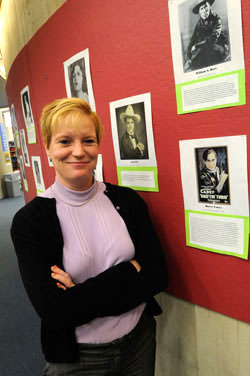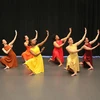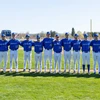
|
FREDONIA, N.Y. — November 17, 2008 — In a digital communication age, silent films might be easily dismissed as relics of a forgotten era of entertainment. But they’re getting plenty of new looks and internet hits at SUNY Fredonia, thanks to a decidedly low-tech display at Daniel Reed Library.
Small reproductions of movie star photos, with accompanying biographies, and lobby cards from the silent era have been assembled for “Silent Movies,” an exhibit prepared by Kathleen Sacco that is free and open to the campus and the general public.
Such an endeavor was an ideal fit for Ms. Sacco, coordinator of systems/assistant to the director at Reed and longtime fan of these movies. She drew upon the resources of the library, such as art books with full-color posters that could be scanned, as well as assorted internet sites, to compile brief biographies of these stars and introductions to their films.
“Students do not have real knowledge of that era, so I thought it would be interesting to have a display to help educate them on the (entertainment) world before sound,” said Ms. Sacco. The curtain was drawn on silent films in the late 1920s with the arrival of “talkies.”
Many of the more popular and influential performers of that era, including Charlie Chaplin, Buster Keaton, Laurel & Hardy, Lillian Gish and Mary Pickford, are featured in 38 posters, as are lesser-known performers such as Theda Bara, Tom Mix, Zasu Pitts and Roscoe “Fatty” Arbuckle. Another 15 posters promote the D.W. Griffith epic, “Intolerance,” and “Robin Hood,” starring Douglas Fairbanks, among other films.
Opportunities to view silent films are disappointingly limited, Ms. Sacco explained, so displays such as this one and the internet can go a long way to fill the void and introduce a very old form of entertainment to technology-savvy audiences.
The exhibit also introduces a website where clips of some two-dozen films, including Buster Keaton’s classic “The General,” Charlie Chaplin’s masterpiece “The Gold Rush” and “The Great Train Robbery,” made in 1903 and heralded as the first narrative film ever made, can be viewed. Background music, provided by a piano, organ or small orchestra, is included with many of the film clips.
“You can watch Rudolph Valentino, a big sex symbol back then, doing the Tango and romancing the girls,” Ms. Sacco explained, or watch cowboy Tom Mix throwing a lasso around a band of desperados in a Western serial. Ms. Sacco is partial to bespectacled comedian Harold Lloyd, known for daring physical feats, but enjoys watching all of these performers.
The display has been attracting a good response from library patrons, she said, based on the numbers of students and staff who stop to read the clippings and the number of hits made on the library’s Web site.
“Silent Movies” runs through the end of the fall semester.



